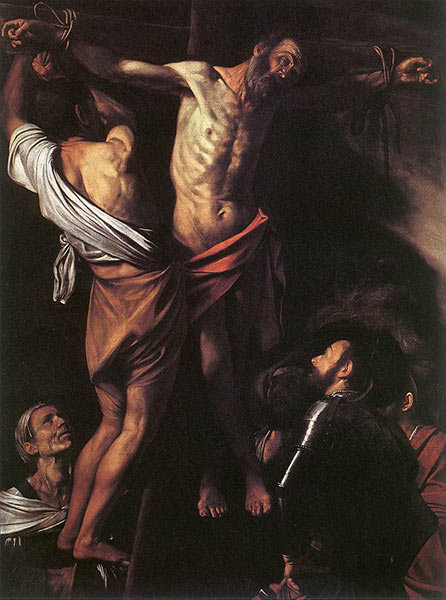Murderer, defector, villain, painter. Caravaggio is indeed one of the most fascinating characters in the history of art. Very few of the artist’s works survive, which means any opportunity to see even one is an opportunity worth taking.
It’s been two years since the public last laid eyes on the magnificent “Crucifixion of Saint Andrew” by Baroque master Michelangelo Merisi da Caravaggio. Since 2014, the Cleveland Museum of Art has been painstakingly conserving the priceless painting, predominantly focusing on cleaning the work from edge to edge. Via the museum webpage, “This is the first time the painting has been conserved since coming to the museum in 1976. In 2014, extensive treatment began on the work, whose original paint layer was obscured by clouded, cracked varnish and retouching. The cleaning of the painting was the subject of a Conservation in Focus exhibition during the summer of 2014, when a sophisticated paintings conservation lab was constructed in the museum’s Julia and Larry Pollack Focus Gallery, where visitors were able to watch the museum’s Conservator of Paintings Dean Yoder and ask questions. ‘The Crucifixion of Saint Andrew’ returns on view May 17, 2016, in the Reid Gallery (gallery 217) in time for the museum’s centennial summer celebrations. Visitors will be able to fully appreciate the newly conserved Baroque masterpiece, the largest painting by Caravaggio in America.”

A conservator works on the masterpiece. (c) Image by David Brichford
The museum continues, “The painting depicts the martyrdom of Saint Andrew, who was sentenced to death for his missionary activity in Greece. While bound to the cross, he preached for two days to an increasingly sympathetic crowd. Finally pressured to release Andrew, his executioners were paralyzed while trying to untie him. Caravaggio portrays the moment when Andrew’s desire to be martyred has been fulfilled. In an unusual interpretation of the subject, Caravaggio presented the event as intimate and private rather than as a gruesome public spectacle.”
To learn more, visit the Cleveland Museum of Art.
This article was featured in Fine Art Today, a weekly e-newsletter from Fine Art Connoisseur magazine. To start receiving Fine Art Today for free, click here.








